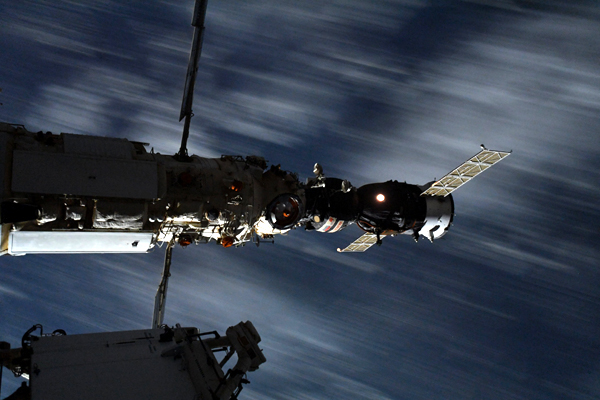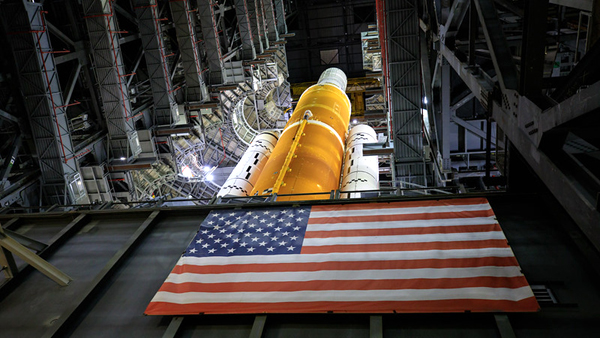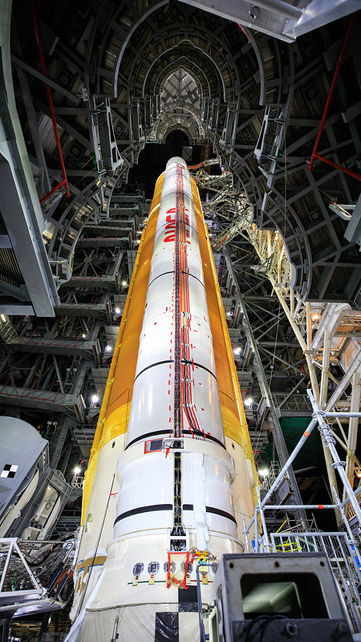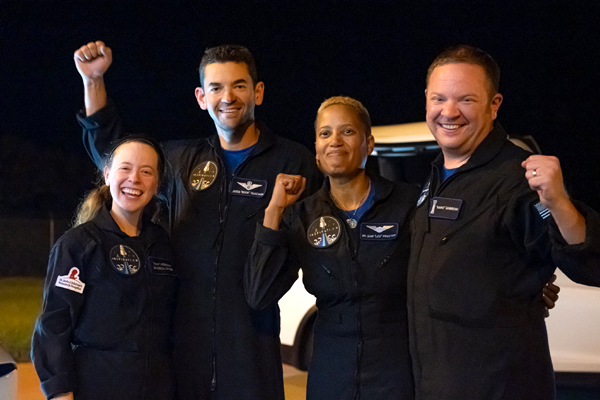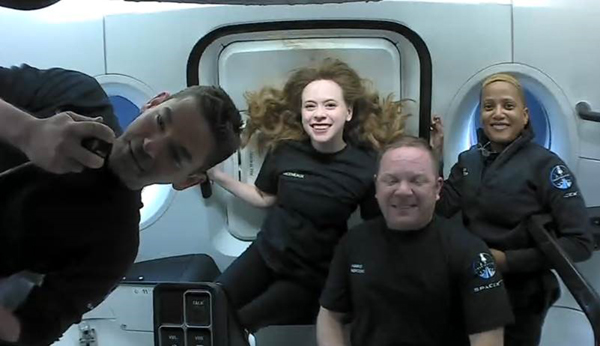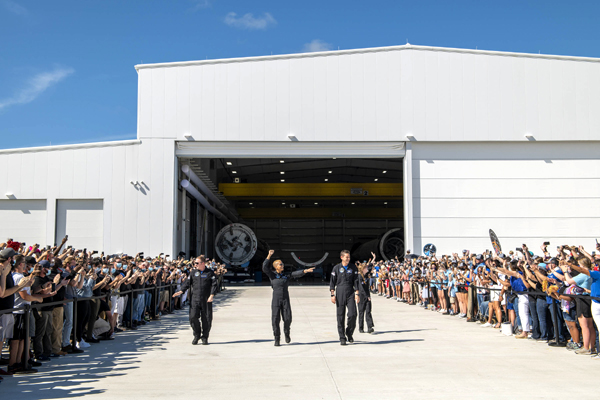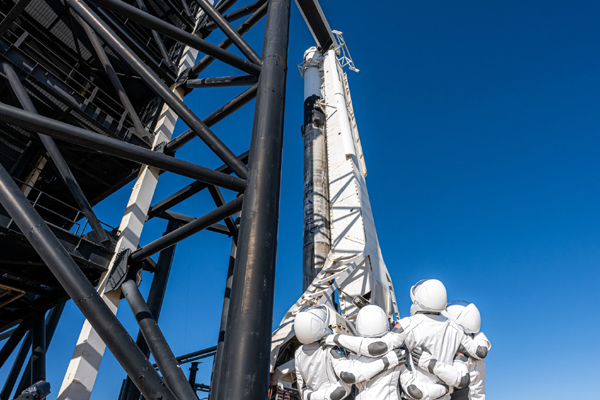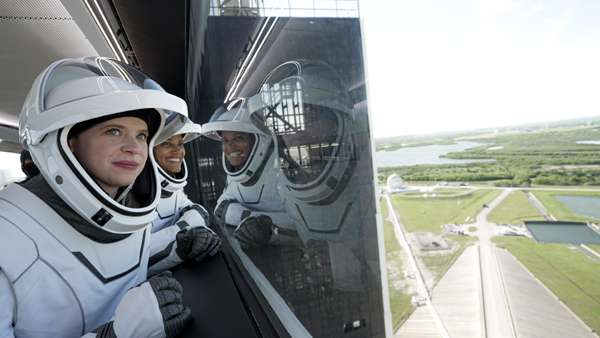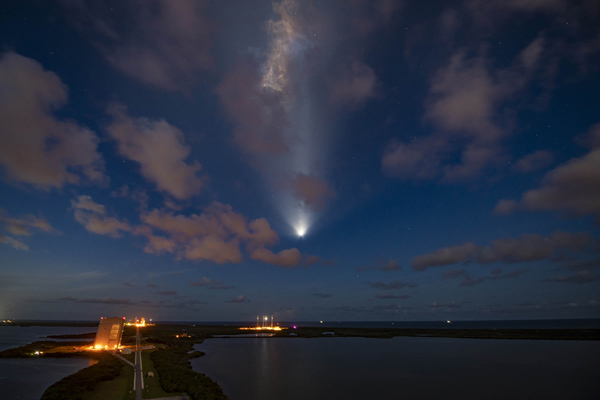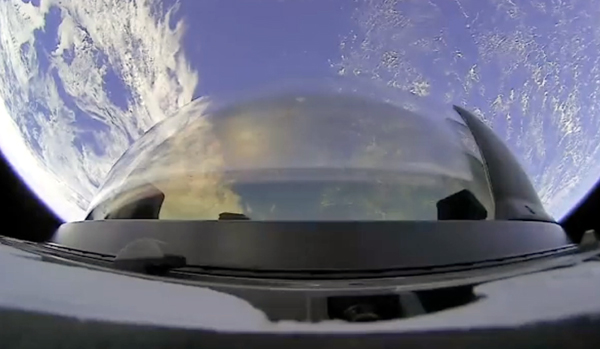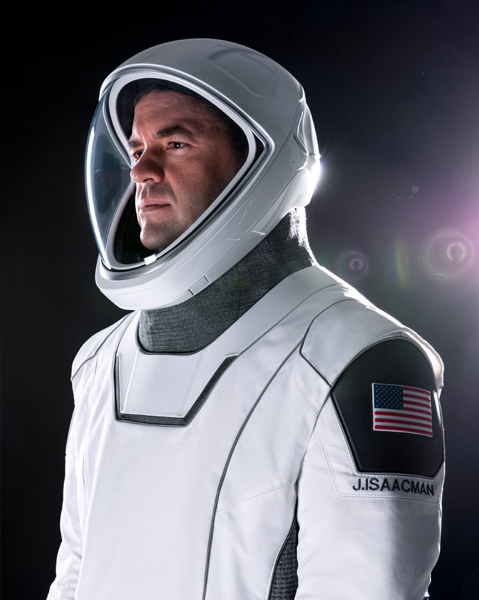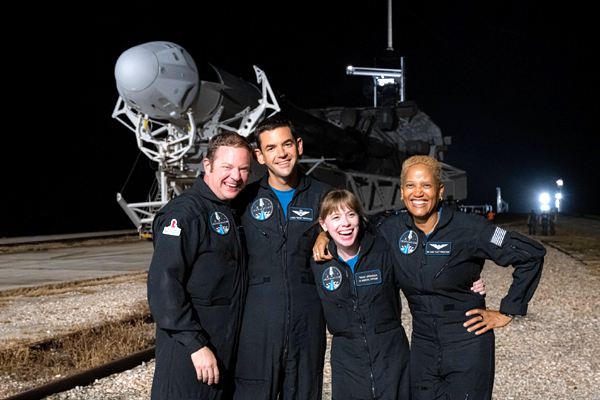
NASA / SSC
NASA Readies for Future Artemis Moon Missions with Rocket Engine Test Series (Press Release)
NASA marked a significant milestone Sept. 30 in its plans for future missions to the Moon and, eventually, Mars with completion of an RS-25 single-engine Retrofit-2 test series at Stennis Space Center near Bay St. Louis, Mississippi.
A full-duration hot fire of RS-25 developmental engine No. 0528 on the A-1 Test Stand at Stennis culminated a seven-test series to support development and production of new engines for the agency’s Space Launch System (SLS) rocket on future missions.
“This successful test series for the Space Launch System RS-25 engine puts us one step closer to manufacturing the first new set of engines for future Artemis missions to the Moon,” said Johnny Heflin, manager of the SLS liquid engines office at NASA’s Marshall Space Flight Center in Huntsville, Alabama. “We are testing engine parts made with advanced manufacturing techniques that can reduce the cost of each engine by more than 30 percent yet still maintain the RS-25 engine’s reliability and high performance.”
During the Sept. 30 hot fire, operators fired RS-25 developmental engine No. 0528, used for each of the seven tests in the series, for more than eight minutes (500 seconds), the same time required during an actual launch.
The test series provided valuable information to Aerojet Rocketdyne, lead contractor for the SLS engines, as it produces engines for use after the Artemis IV mission to the Moon. Operators collected hot fire data to demonstrate and verify various engine capabilities, and to evaluate new engine components manufactured with cutting-edge and cost-saving technologies and reduce operational risk.
Tested components included a 3D-printed pogo accumulator to dampen pressure oscillations that can cause flight instability and a main combustion chamber fabricated using a hot isostatic pressure (HIP) bonding technique. These components are significant early milestones in NASA’s and Aerojet Rocketdyne’s effort to maximize state-of-the-art manufacturing methods to significantly reduce the cost and time needed to build new RS-25 engines.
The Sept. 30 test was delayed from its original date due to impacts from Hurricane Ida, which struck the Gulf Coast region on Aug. 29. The storm initially impacted propellant deliveries to the center, necessitating a delay as suppliers recovered full capabilities.
“I am proud to see how the test team and our propellant suppliers overcame the impacts of Hurricane Ida to get us back to testing the RS-25,” Stennis RS-25 Project Manager Chip Ellis said. “With each test we learn more and more about the RS-25 engine and how it operates. And it is exciting to know that what we are doing contributes to the safety of the astronauts that will fly on SLS.”
Four RS-25 engines, along with a pair of solid rocket boosters, will help power SLS at launch. Firing simultaneously, the engines will generate a combined 1.6 million pounds of thrust at liftoff and 2 million pounds during ascent.
Previous RS-25 testing at Stennis began Jan. 9, 2015, and concluded April 4, 2019. During this period, NASA completed acceptance testing of former space shuttle main engines that will help power the first four SLS missions, conducted developmental and flightworthiness testing for all 16 new controllers (plus one spare) to be used on the heritage RS-25 engines, and demonstrated the ability of RS-25 engines to perform at the higher power level required to launch the super-heavy SLS rocket.
The first hot fire of the most current series was conducted on Jan. 28, 2021. Over the course of the seven-part test series, which coincided with Green Run testing of the SLS core stage at Stennis, developmental engine No. 0528 underwent 3,650 seconds of hot fire. The schedule included six full-duration, hot fire tests of more than eight minutes (500 seconds) and one hot fire of just under 11 minutes (650 seconds). A full-duration test refers to the time the engine must fire during an actual launch in order to power SLS towards orbit. Longer duration hot fires are conducted to test the limits of engine performance.
The Retrofit-2 test series followed major maintenance and upgrade projects on the A-1 Test Stand, including installation of a new NASA-designed-and-manufactured thrust vector control system on the structure that allows operators to “gimbal” test RS-25 engines, moving them on a tight circular axis. Gimbaling is a critical capability that ensures SLS can maintain a proper flight trajectory.
Operators are scheduled to begin a follow-up Retrofit-3 test series, using RS-25 developmental engine No. 0525, on the A-1 Test Stand later this fall. The new series will continue to collect data for new engine production.
NASA is building SLS as the world’s most powerful rocket. With Artemis, NASA will land the first woman and the first person of color on the lunar surface and establish long-term exploration at the Moon in preparation for human missions to Mars. SLS and the Orion spacecraft, along with the commercial Human Landing System and the Gateway in orbit around the Moon, are NASA’s backbone for deep space exploration. The agency is working towards the launch of the Artemis I uncrewed flight test in upcoming months, which will pave the way for future missions.
RS-25 tests at Stennis are conducted by a combined team of NASA, Aerojet Rocketdyne and Syncom Space Services operators. Syncom Space Services is the prime contractor for Stennis facilities and operations.
Source: NASA.Gov



